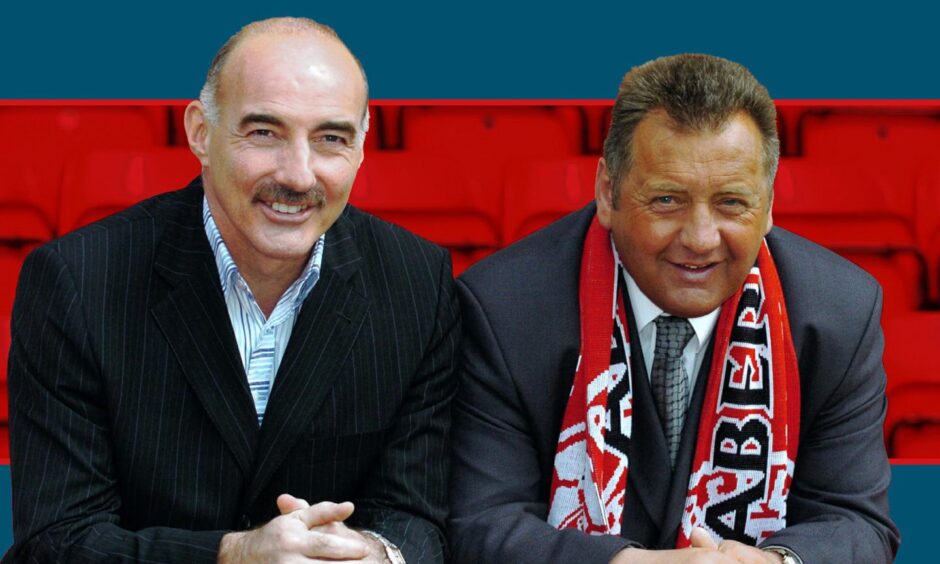
They were team-mates in Glasgow while at primary school but it was Jimmy Calderwood’s attacking style of play at Dunfermline which convinced Willie Miller he could manage Aberdeen.
Miller, captain of the Gothenburg Greats and a former Dons boss in his own right, returned to Pittodrie as an executive on the board in May 2004.
It had been a difficult season for the Dons under manager Steve Paterson with the club ending the campaign in 11th place.
The board at Pittodrie agreed a change in the dugout was needed – and Miller had no hesitation in recommending his former team-mate Calderwood, who was in charge of the Pars.
Miller said: “We were schoolboy team-mates in Glasgow – but it had nothing to do with Jimmy getting the job.
“We went to America together with Glasgow schoolboys under-12s. We were based in Trenton, New Jersey for three weeks.
“I didn’t stay with Jimmy, I stayed with another player. We were put with different families in the area who looked after us and we came together to train and play games.
“Thereafter, I think we played a couple of under-23 games (with him) as well, but I hadn’t had much contact with him over the years until he came back to Scotland.
“It was at Dunfermline he made his mark in Scotland.”
Calderwood’s track record stood out for the Dons
The decision to make an approach for the Pars boss was a no-brainer.
Calderwood had guided Dunfermline to fourth place in the SPL and taken the club to the final of the Scottish Cup.
Miller said: “I played a part in identifying him as a potential manager.
“He was doing such a good job at Dunfermline and we gave him the opportunity to manage at a higher level.
“The style of football was a big reason for wanting him on board.
“He played an open, attacking style of play and was known for being brave and going two at the back if he needed his side to get back into a game.
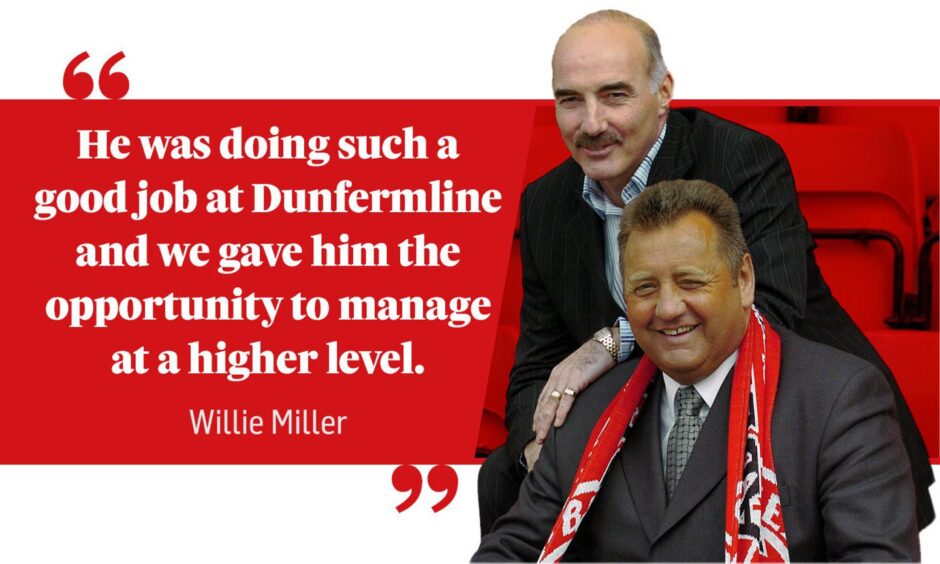
“Jimmy Calderwood, Jimmy Nicholl and Sandy Clark, who joined in 2005, were a very experienced management team.
“Of course you hope any management team you appoint can win trophies, but it was the style of football which we felt they could bring which interested us.”
European run was the highlight of Calderwood’s reign – ‘We put Copenhagen to the sword’
Calderwood set about the task of restoring respectability to a club who had languished in the bottom half of the table.
He brought European football back to Pittodrie after a five-year absence and the wait was certainly worth it as the Dons embarked on a remarkable campaign in the penultimate edition of the Uefa Cup in the 2007-08 season.
For Miller, the European run was undoubtedly the highlight of Calderwood’s tenure.
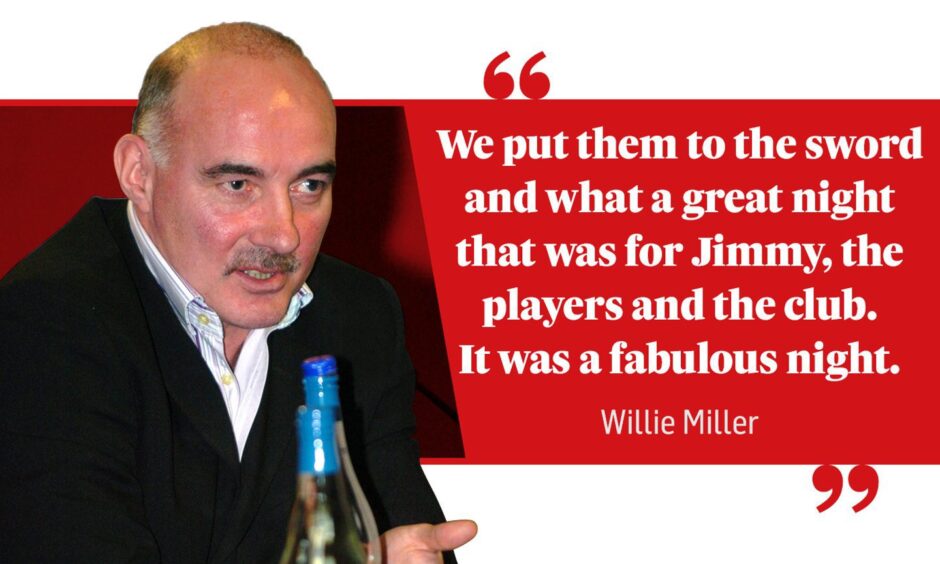
He said: “There were a lot of upsides – the European adventure we had… Darren Mackie scoring in Dnipro, the Copenhagen game and, of course, playing Bayern Munich again.
“The Copenhagen match at Pittodrie was a sensational game of football.
“We are talking about a team who were serial European campaigners. They were used to winning their league in Denmark and I can remember their board coming into the boardroom very casual.
“They were the typical Scandinavian team, walking around the place in their jeans, and I can remember looking at how relaxed they were and realising they thought we were lambs to the slaughter in the game in Aberdeen.
“We put them to the sword and what a great night that was for Jimmy, the players and the club. It was a fabulous night”
Miller’s second meeting with Bayern Munich
The reward for beating Copenhagen was progression to the knockout phase against familiar foes Bayern Munich.
The Dons rose to the occasion, holding the Germans to a 2-2 draw in the first leg at Pittodrie before exiting the tournament following a 5-1 defeat in the second leg in Munich.
For Miller. in particular, hosting the Germans proved an enjoyable moment – for him, if not the visiting dignitaries.
He said: “Bayern was special because we were able to sit down with Franz Beckenbauer and Paul Breitner, who I had played against in 1983, when we entertained them.
“I remember mentioning 1983 to them and all I got was complete silence coming back – there was no recognition on their part of that game ever taking place!
“Being the host you politely let it go. If they didn’t want to talk about it, then fair enough.”
Cup campaigns cost Calderwood
Calderwood had made the Dons competitive in the top half of the table, but there is no escaping the disappointments of the cup competitions.
The Dons boss could not bring silverware to the club in his five years in charge and some painful cup exits against Queen’s Park, his former club Dunfermline and Queen of the South ultimately planted the seed in the boardroom that a refresh was required.
Miller believes the 4-3 defeat to Queen of the South in the Scottish Cup semi-final in 2008, just two months after the highs of Bayern, was a key turning point.
He said: “The big downside would be the Queen of the South game at Hampden.
“It was an incredible game of football.
“Every time Aberdeen scored, I was sitting thinking: ‘If we can just calm down now we’ll be fine’, but it didn’t quite work out that way as we lost 4-3 in an incredible game.
“Reaching a final felt like such a big hurdle for the club, and had we been able to deal with the semi-final and get to a final, then history could be changed completely as far as how Jimmy has been remembered.”
‘It was hard to look past the Queen of the South game’
Another year would pass before a change was made on the final day of the 2008-09 season.
Calderwood was understandably frustrated at the decision – but Miller believes the call to make a change was the correct one.
He said: “The team played front-foot football under Jimmy, but at the end of the day, if you are the Aberdeen manager, you are judged on whether you bring a trophy to the club.
“In five years that wasn’t the case, which is why myself and the board decided a change was required.
“We felt he could bring a trophy or trophies to the club, but he didn’t manage to do that.
“As a board we had to make an assessment after five years and it was hard to look past the Queen of the South game.
“It wasn’t the reason we changed manager, but it is certainly a sliding doors moment in his time at the club when it came to making that decision a year later.
“We all felt if we had reached the final, we would have won the cup – but the history books show it didn’t happen.”
Read more from our series on former Aberdeen FC manager Jimmy Calderwood:
- Russell Anderson on the man who breathed fresh life into Aberdeen
- Darren Mackie believes ex-Aberdeen boss saved his Pittodrie career
- Richie Byrne reveals boss’ efforts to help him see his son during Dons spell
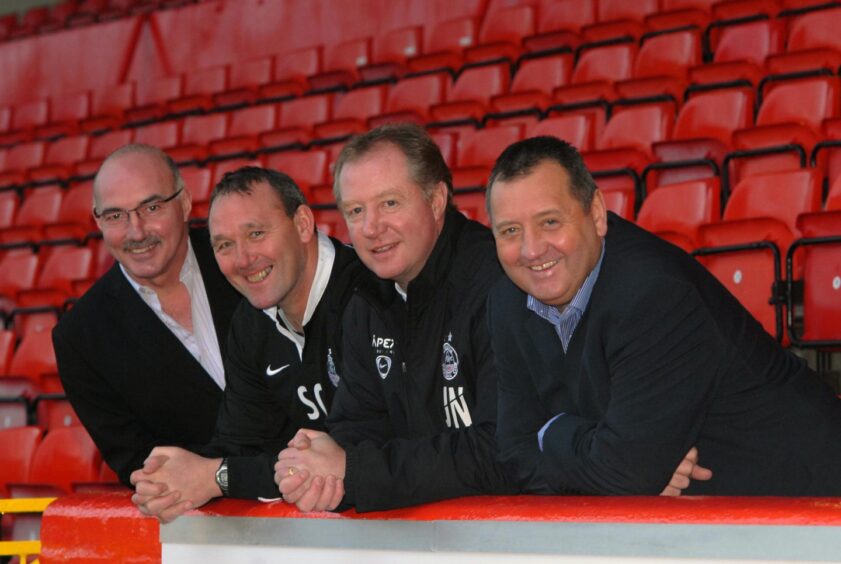
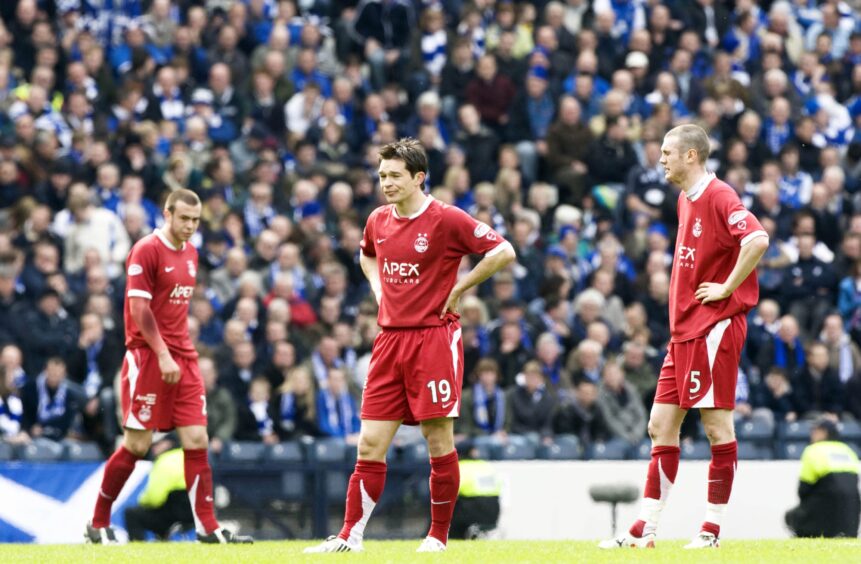
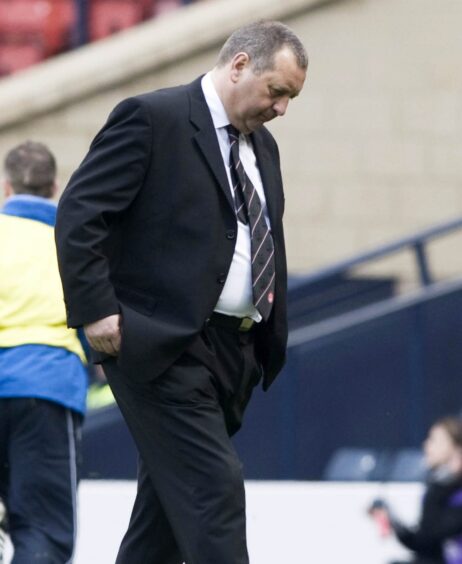
Conversation